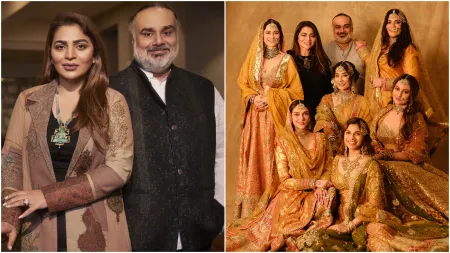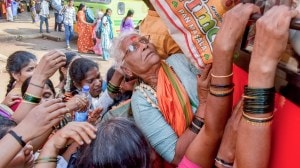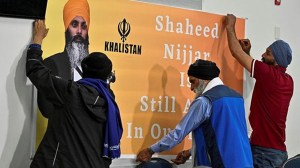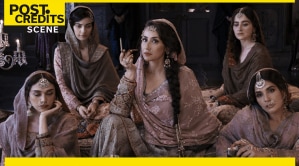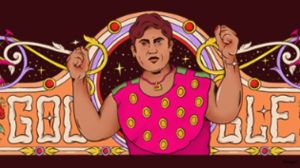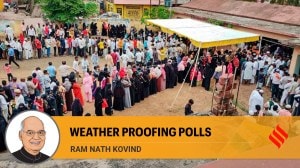- India
- International
Anxieties of the dominant
At the root of the insecurities of Marathas, Jats and Patels lies lack of education and employability
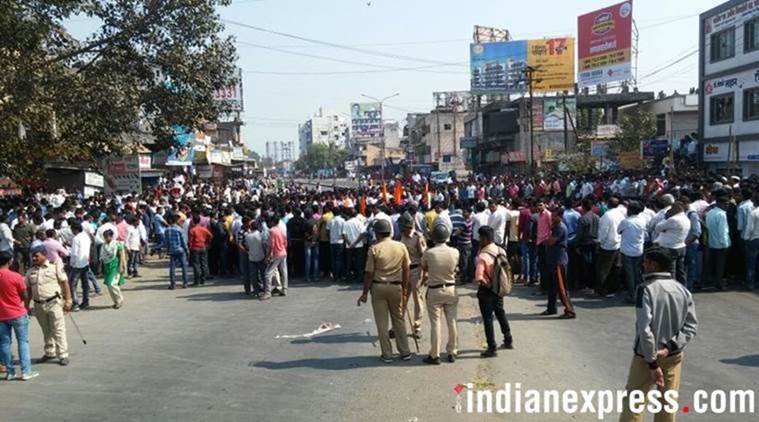 At the root of the insecurities of Marathas, Jats and Patels lies lack of education and employability (Express Photo by Arul Horizon)
At the root of the insecurities of Marathas, Jats and Patels lies lack of education and employability (Express Photo by Arul Horizon)
The recent clash in Pune district between the Mahars and Marathas reflects the anti-Dalit prejudice of the latter, but it needs to be analysed in the context of the changing status of dominant castes, not only in Maharashtra but across India. The claims of Patels, Jats and Marathas to be considered as OBCs have been dismissed by many observers simply because these dominant castes are not socially backward. Certainly, they are ahead of lower castes in terms of income. But this socio-economic reality needs to be qualified from two perspectives. First, poor Patels, Jats and Marathas are now lagging behind affluent OBCs (sometimes even the Dalits). Second, their demand for quotas reflects anxieties regarding education and jobs. This is evident from the Indian Human Development Survey. While dominant castes do well in terms of income, they systematically lag behind other forward castes in terms of education, largely because of their rural background.
In Maharashtra, in 2011-12, the percentage of Brahmins who were graduates and above was about 26 per cent, against 8.1 per cent among the Marathas. The Dalits stood at 5.1 per cent and the OBCs at 7.6 per cent, but among the latter, the Malis had reached 9.5 per cent. More importantly, from 2004-05 to 2011-12, the Dalits and OBCs have gained at a faster rate in education. The percentage of graduates among the Dalits in 2004-05 was 1.9 per cent and has more than doubled to 5.1 per cent in 2011-12. The corresponding figure for the OBCs was 3.5 per cent and has doubled to 7.6 per cent in 2011-12, while the Marathas were at 4.6 per cent in 2004-05 and have come up to only 8 per cent in 2011-12.
The Marathas not only resent the rise of the OBCs and the Dalits in the educational system because of reservations, they also cannot compete with upper castes because of their under-representation in the English-medium colleges. As a result, the Marathas have not benefited as much as upper castes from the rise of the services, including IT, in post-1991 liberalised India. And only the richest among them could profit by the government’s support to export-oriented agriculturists.
The Patels are similarly affected, despite their increasing presence in expensive private universities. The percentage of graduates among the Patels was 9.8 per cent in 2011-12, against 19.1 per cent for the Brahmins and 11.7 per cent for other forward castes. The OBCs and SCs were far below, at 2.4 per cent and 4.8 per cent respectively. But the OBCs have gained in education during 2004-05 to 2011-12. The percentage of graduates among them was abysmally low at 1.1 per cent in 2004-05 and went up to 2.4 per cent in 2011-12. Although it appears a marginal increment in terms of percentage, the actual number of graduates has doubled among the OBCs. The SCs have almost doubled their percentage of graduates too, from 2.7 per cent in 2004-05 to 4.8 per cent in 2011-12. The Dalit mobilisation sparked by the Una incident has to be seen in this light.
In Haryana, the percentage of graduates among the Jats, at 5.1 per cent, is not only lower than that of the Brahmins (15.7 per cent) and other forward castes (14.4 per cent), but also of the OBCs (5.4 per cent). And the SCs and OBCs have gained in education more than the Jats from 2004-05 to 2011-12. The percentage of graduates among the Dalits has more than doubled from 0.8 per cent in 2004-05 to 2.1per cent in 2011-12. The Jats pay the price for their historical neglect of education even more than other dominant castes.

To sum up: During 2004-05 to 2011-12, the percentage of graduates among the SCs, OBCs and Marathas/Patels/Jats has respectively increased by 171 per cent, 121 per cent and 71 per cent in Maharashtra; 94 per cent, 114 per cent and 38 per cent in Gujarat; and 135 per cent, 77 per cent and 70 per cent in Haryana. These dominant castes feel threatened, more so because they could not get as many salaried jobs as they would like.
The current services-led economic growth demands a certain level of education, social skills and attributes. The dominant castes often lack these assets, and while the SCs and OBCs miss them too, they partly make up for this because of reservations. The salaried jobs they get are often valued because of the stability and the average income they offer compared to the informal sector and agriculture. For instance, the average annual per capita income in a household headed by a cultivator is Rs 37,818 in Haryana whereas, for the salaried, it is Rs 54,899. Any salaried job is placed over casual labour or petty self-employment as a surer way of mobility.
The percentage of salaried people among SCs is about 28 per cent in Maharashtra, 27 per cent in Gujarat and 21 per cent in Haryana, as against 30 per cent among Marathas, 19 per cent among Patels and just 11 per cent among Jats. The OBCs are also doing rather well. The salaried among them are 23 per cent in Maharashtra, about 17 per cent in Gujarat and 19 per cent in Haryana.
This rise of the SCs and OBCs in salaried jobs has generated resentment among many dominant castes which are still over-represented in agriculture, at a time agriculture is becoming increasingly unviable and incomes are less than from other occupations in rural areas. For instance, about 63 per cent Kunbi Marathas and 44 per cent Marathas in Maharashtra, 40 per cent Patels in Gujarat and 67 per cent Jats in Haryana were agriculturists in 2011-12. The corresponding figures for OBCs for these states were 31 per cent, 28 per cent and 26 per cent. The percentage of cultivators among the SCs is even lower as they hardly own land — a blessing in disguise. They are about 11 per cent in Maharashtra, 20 per cent in Gujarat and 6 per cent in Haryana.
These data throw light on the dominant castes’ mobilisation but do not legitimise their demand for reservations. First, only a fraction of their members are lagging in socio-economic terms. Second, job reservations are no solution: How can the state provide enough work to 60 per cent of society, even if the judiciary permitted it? The priorities lie in improving the employability of the youth, and, in the short term, a genuine promotion of agriculture, a sector that has been neglected in public policies, as evident from the low MSPs that farmers get. But is the government prepared to attenuate its pro-urban consumer bias?
EXPRESS OPINION
More Explained
May 04: Latest News
- 0113 hours ago
- 0213 hours ago
- 0313 hours ago
- 046 hours ago
- 0513 hours ago









